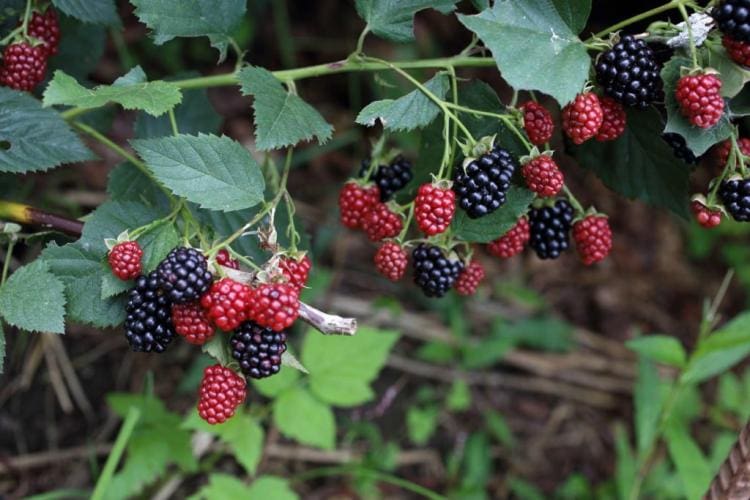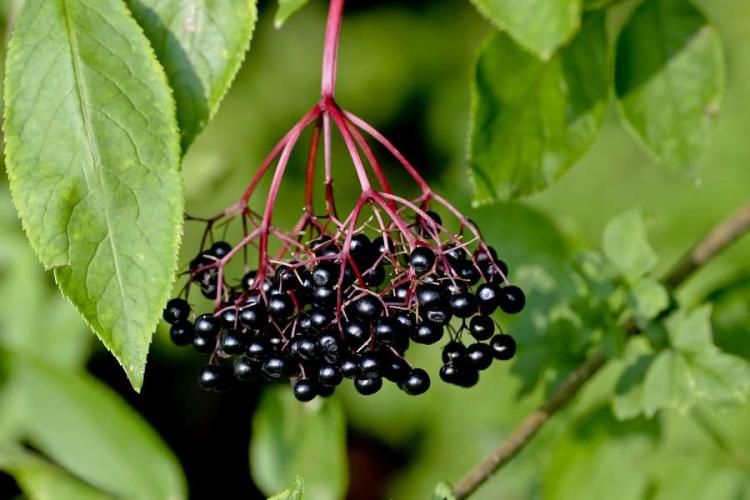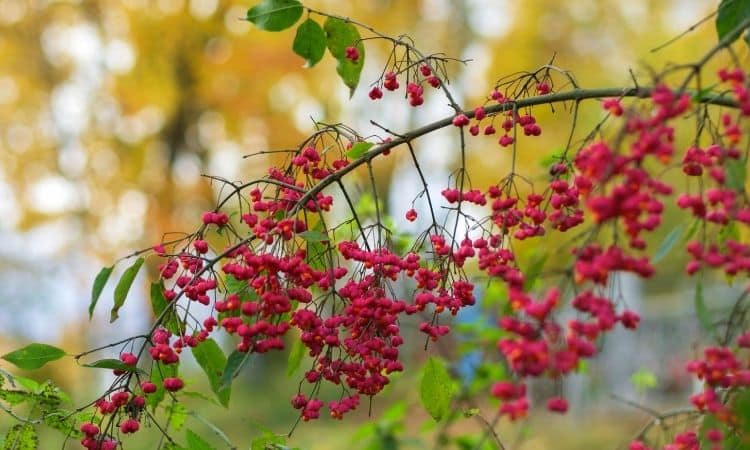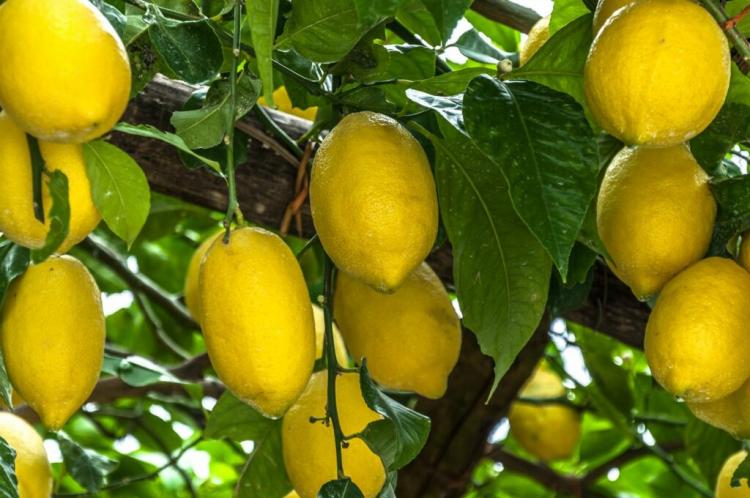9 Berries You’ve Probably Never Heard Of
Everyone knows strawberries and blueberries – but here we show you nine berries you’ve probably never heard of.
Fresh, juicy, and delicious – berries from your own garden are simply heavenly and a real temptation for those with a sweet tooth. But in addition to the classics such as strawberries, currants, or raspberries, there are numerous berry varieties that are still true rarities in America. These berries impress with unusual colors, remarkable blossoms, or completely new taste experiences and have definitely earned a place in the garden.
Which berries, of which you have probably never heard, you should nevertheless in no case miss, we show you in this article.
9. Pink Currant
Table of Contents
The redcurrant (Ribes) is a time-honored favorite in the USA gardens. But few know that, in addition to the well-known red and blackberries, there is also a third color variation: the pink currant. In fact, this is a lighter variant of the red currant (Ribes ruberum), which in cultivation hardly differs from the normal current, but shines with pale pink fruits. In addition, pink currant varieties such as “Rosa Sport®” or “Rosa Helene” shine with a sweet and sour taste – so the currant jam can soon not only enchant your palate, the plant is also a real eye-catcher with its unique color.

8. Tayberry
Raspberry (Rubus idaeus) and blackberry (Rubus fructicosus) are probably among the most popular berries of all. But what would be the result if you crossed the two berries? Quite simple: the tayberry (Rubus fructicosus x idaeus). Even though the tayberry is not yet well known in our country, it cannot hide its resemblance to the berry classics – while the long, prickly shoots of the tayberry are strongly reminiscent of the blackberry, the fruits look confusingly similar to raspberries. The berry is particularly popular because of its robustness and very good winter hardiness. But also its fresh, slightly sour aroma is a reason why the tayberry is an asset to any garden.
7. Gooseberry
While the gooseberry (Ribes uva-crispa) was found in almost every bed in grandma’s day, it is rarely found today. Its namesake thorns and high susceptibility to gooseberry mildew have caused many gardeners to ban the plants from their beds. But soon gooseberries could once again be planted in many gardens, as new varieties – completely free of gooseberry’s main problems – are making the plant attractive again to amateur gardeners. The varieties ‘Captivator Red Gooseberry’ and ‘Spinefree’, for example, almost no longer bear thorns that could injure you when harvesting and are also considered resistant to mildew. So you can grow gooseberries in your own garden without any worries and enjoy their sweet and sour aroma.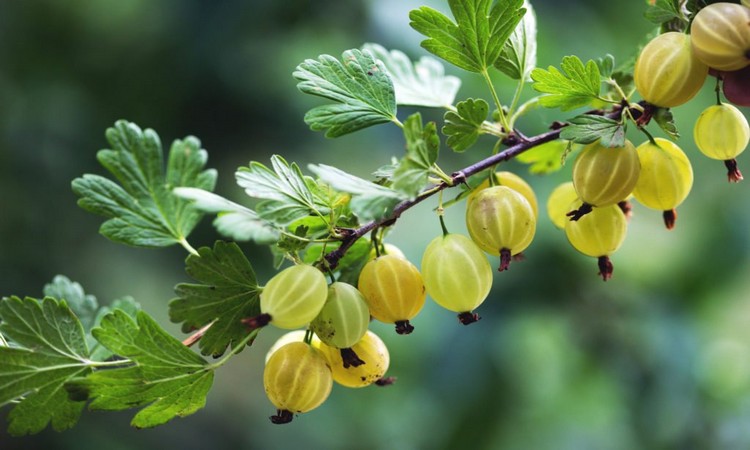
6. Red Mulberry
Do you want an ornamental shrub that is also useful? Then the red mulberry (Morus rubra) is just what you need. The mulberry species originally comes from America, which is why it is also called American mulberry but has long been an insider’s tip in the USA. The mulberry tree can grow up to 15 meters high and impresses with its broad crown and large, decoratively serrated leaves.
You might so like: Hawthorn Species: Single, Large-Calyzed Hawthorn
From May, the mulberry tree then turns into a real feast for the eyes, bearing numerous willow-cat-shaped flowers. The berries of the red mulberry can be harvested from July when they have taken on a dark red, almost black color. On the tongue, the red mulberry shines with a juicy-sweet taste and quickly convinces even people who did not know the berry before.

5. Loganberry
Just like the tayberry, the loganberry (Rubus x loganobaccus) is a cross between the raspberry and the blackberry, but it was bred in the 19th century. The positive characteristics of both plants were combined. The loganberry is particularly fast-growing, bears larger fruit than the raspberry, and is also extremely easy to care for. The flesh of the loganberry is firm and rich in vitamin C. The taste of the loganberry is rather sour. Due to its rather sour taste, the loganberry is mostly processed into jams, syrups, or cakes, but it can of course also simply be eaten raw.
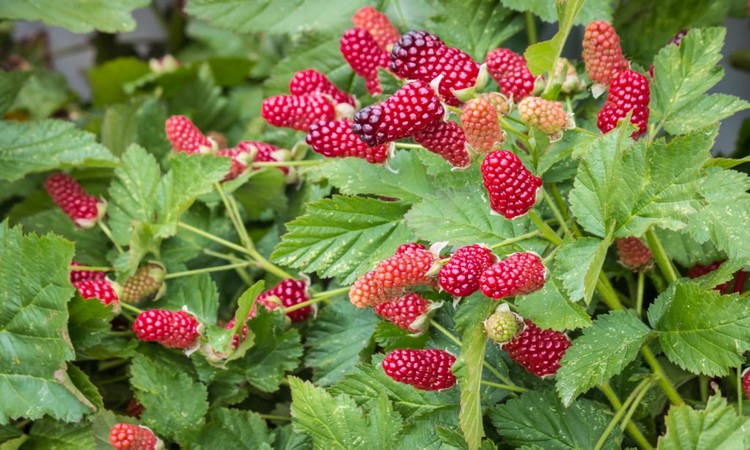
4. Salmonberry
Salmonberry (Rubus spectabilis)? And it is supposed to taste good? That’s probably how many people feel when they hear about it for the first time. Fortunately, the salmonberry (also known as the splendid raspberry) does not taste like fish, but deliciously sweet. The name most likely comes from the salmonberry’s harvest time, which coincided exactly with the arrival of spring salmon on the Columbia River in North America. However, the salmonberry is not only interesting for the garden because of its delicious fruit: the salmonberry is also particularly popular for its spectacular flowers. With their intense pink, double petals, these are almost reminiscent of roses and are simply breathtakingly beautiful.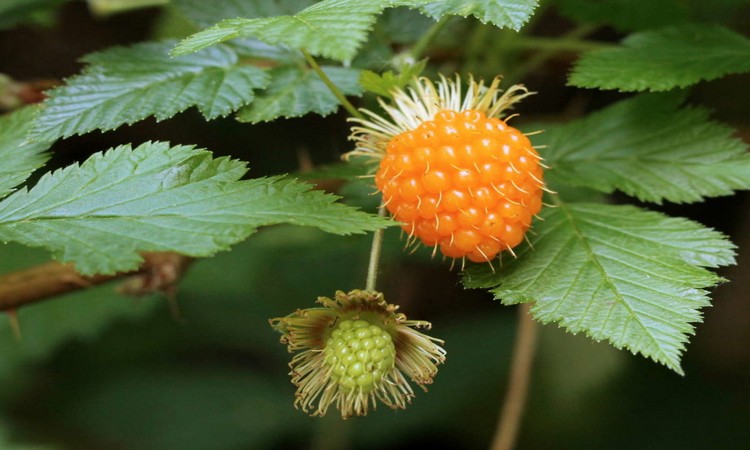
| You might so like: Honeyberry: Varieties, Location And Pruning Of The Fly Honeysuckle
3. Schisandra Berry
Schisandra berry? Never heard of it. As unknown as the Schisandra berry is with us, it is so popular in the Asian region. Here the berry of the Schisandra plant (Schisandra Chinensis), also called a split berry, is said to have healing properties and is considered to be extremely healthy. Due to its many vitamins and other anti-inflammatory substances, one can indeed not deny the berry its health-promoting effect. The taste, on the other hand, takes some getting used to: in Chinese, the Schisandra berry is also called the “berry of five tastes” because it is said to taste sweet, sour, salty, bitter, and spicy. With this unusual flavor combination, the Schisandra berry is not everyone’s favorite and is certainly only suitable for those with a sweet tooth to a limited extent.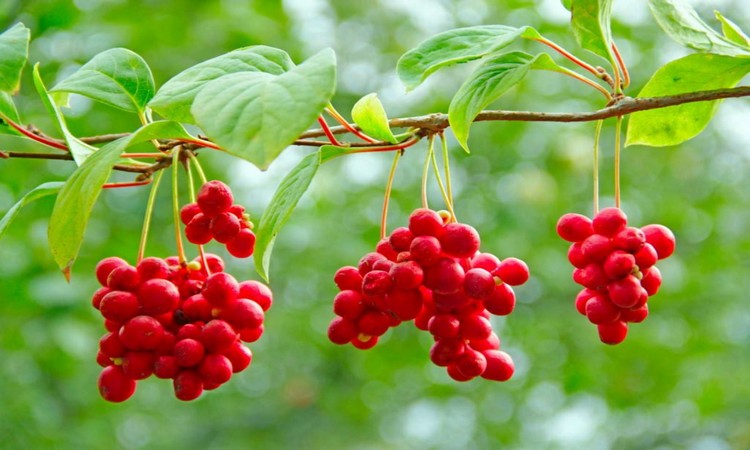
2. Cloudberry
Multi berry, peat berry, shellberry, or even swamp blackberry – the cloudberry (Rubus chamaemorus) has many names. The plant is closely related to the raspberry and originally comes from the Scandinavian region. So it is not surprising that the cloudberry from the far north is hardy. In fact, despite its fragile appearance, the berry can withstand temperatures as low as -104°F. But it is not only because of its extraordinary robustness that the cloudberry is so popular in Scandinavia. The taste of the sweet berry is also not to be sneezed at: Its taste is said to be sweetish with a spiciness that is difficult to define. Especially in Lapland, the berry enjoys such great popularity that it is considered a landmark and is also referred to as “Lapland’s gold”.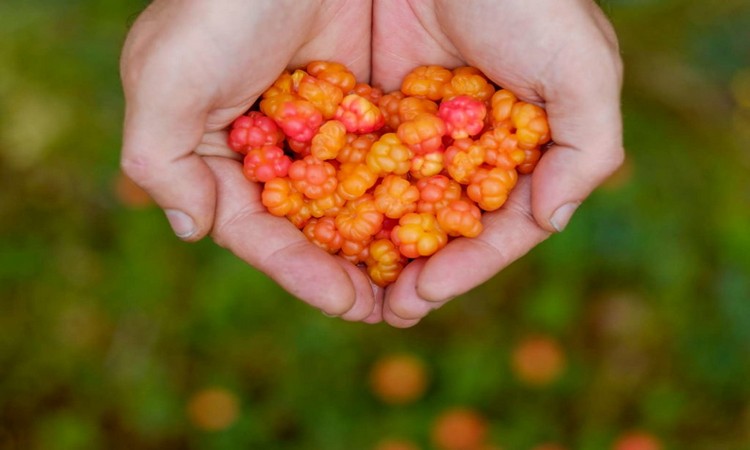
1. Black Honeyberry
The name says it all: The black honeyberry (Ribes divaricatum) not only captivates with its dark color, but its taste is also reminiscent of sweet honey. Especially in the USA and Canada, the honeyberry is extremely popular because of its taste, but here the plant is rather unknown. However, this should change quickly – the black honeyberry is not only extremely tasty but also very robust. Thus, it reliably survives wind and weather and is very rarely affected by mildew. In addition, the plant fruits reliably and thus give us every year a large amount of its sweet, cherry-sized berries – making it a perfect choice for hobby gardens.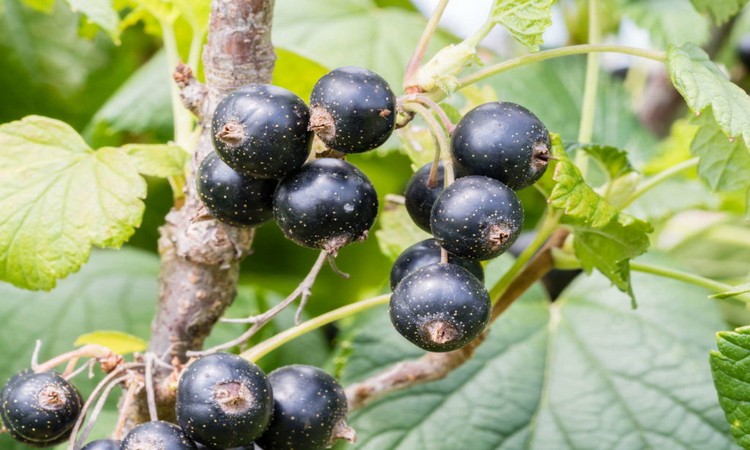
Have we piqued your interest in special plants? Then take a look at our article on the topic “10 Unusual And Exotic Fruit Varieties“.
You Might Also Like How To Fertilize Blackberries

